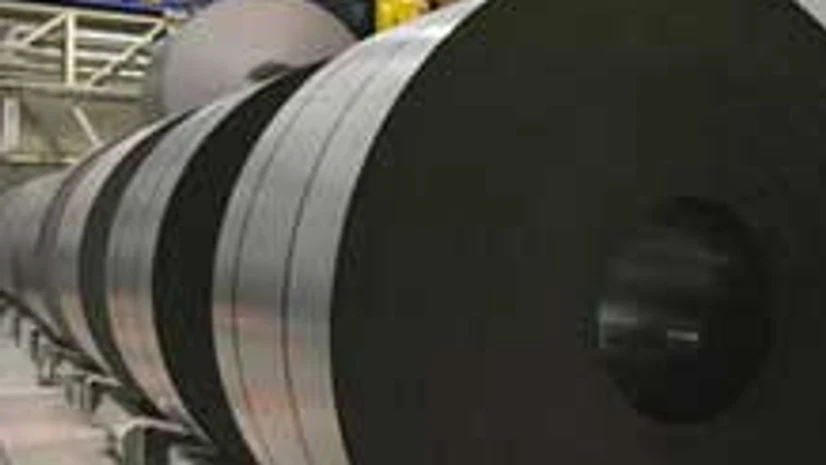The geographical shift in steelmaking capacity to emerging economies since the 70s has now picked up greater force in the automobile sector. In the global steel production of 1.607 billion tonnes (bt) in 2013, the share of Asia (1.08 bt) was 67.3 per cent, thanks largely to China, with output of 779 million tonnes (mt). As in steel, in the global automobile segment, too, China dominates.
Last year, it accounted for production of 22.17 million units out of the global output of 87.3 million units. The geographical shift is best illustrated by a study that says in the expected global market growth of 33 million cars between 2007 and 2020, as many as 32 million units are to come from developing economies. That China will have the largest share in that growth is a given.
Through the past couple of years, India's steel and automobile sectors could not perform to their potential because of the economy's sub-five per cent growth. Consulting firm Booz & Co, however, says through the next 20 years, India will be part of the automobile space's "global big three", along with China and the US. It adds auto sales here will "exceed the US market by the mid 2030s". Many in the industry may not agree, but Steel Authority of India Ltd Chairman Chandra Shekhar Verma remains steadfast in his belief that India "could more-than-triple its steel capacity to 300 mt by 2025, in which my company's share would be 50 mt".
More From This Section
| BATTLEGROUND AUTO |
|
The enormous geographical shift is the reason why the Laksmi Mittal-led ArcelorMittal has joined hands with Hunan Valin to build a plant in China's Hunan province to make ultra high-strength auto steel, for which that country is import-dependent. China has an estimated steel capacity of one bt, but lacks technologies Mittal has given to joint venture Valin ArcelorMittal Automotive Steel (Vama). In fact, technologies to make auto steel, which is exceptionally strong but also light (body in white) are available with only a few steelmakers in Japan, Europe and the US. Naturally, they will share such technologies, the result of millions of dollars of investment in research and development, with foreign firms on terms favourable to them. It took Tata Steel much effort to partner Nippon Steel in a cold rolling venture at Jamshedpur for making high-grade auto steel.
The sheer size of the automobile segment in China and the fact that it is the world's fastest growing market for cars and commercial vehicles have been a big draw for ArcelorMittal. Mittal says auto sector operates on global platforms and carmakers will increasingly function the "same way in China as they do in the US". Carmakers in the US, Japan and Europe that use ArcelorMittal auto steel in several parts of the world wanted the world's largest steel producer to build a plant in China. According to Mittal, it is a distinct advantage for the likes of General Motors, Volkswagen and Toyota to be supplied steel by the same entity in different locations across the globe, "as they are guaranteed exactly the same product made to exactly the same quality standards".
Technology breakthroughs allowing production of auto steel, the use of which will make cars lighter but safer, have been the result of governments across the world progressively raising the fuel efficiency bar. At the same time, the fact that alternative material such as aluminium and composites are finding increasing application in automobiles, particularly in Europe and the US, has set alarm bells ringing for steel makers. As Mittal says, the challenge for the steel sector is to see that the 'body-in-white' portion of the car, typically weighing between 600 kg and 800 kg, becomes 25 per cent lighter. Vama will enable the Chinese auto sector to achieve the targeted car-weight reduction and conform to increasingly strict emission norms.
A Volkswagen spokesperson says the use of high-strength steel is a "cost-effective way of reducing car weight…innovations in steel engineering have made it possible to reduce weight without turning to more costly materials". For some parts of a vehicle for which strength is priority, "steel is found to be the lightest of all materials". Besides due to its "unmatched advantage over other metals on account of strength, steel recommends itself over other metals on its leaving comparatively low carbon footprint through its entire lifecycle", says Verma. His claim finds confirmation in a study by the Boston Consulting Group that says steel has a positive carbon dioxide emission saving ratio of 6:1 - for every tonne of carbon dioxide produced during steel making, six tonnes of carbon dioxide are saved through the application and use of steel products. In a report, Reuters says while western auto companies, led by Audi and Ford, have found merit in using more and more aluminium in cars, their counterparts in Asia are sticking to steel because of their "reluctance to invest in costly retooling" for a shift from steel to other materials.

)
